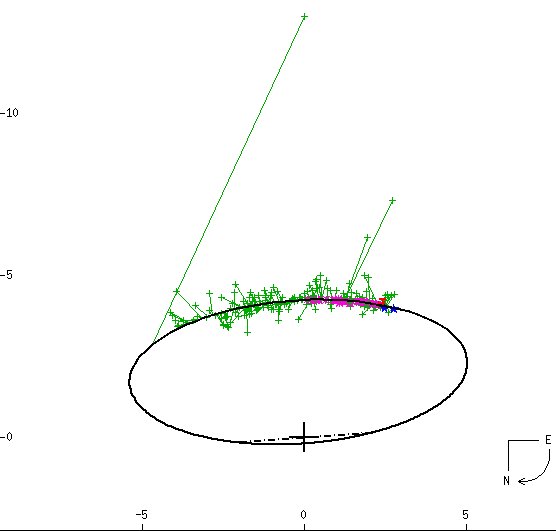
 |
The apparent orbit of 36 Ophiuchi B about brighter 36 Oph A (at the cross) is tilted almost into the line of sight. The actual major axis of the true orbit (dash-dot line) is way down at the bottom, with the cross at the focus of the true orbital ellipse. Given a bit more tilt and the stars could eclipse each other once apiece during the 470-or-so year orbit. Adding to the odd effect is a high eccentricity that takes the two from as far as nearly 160 AU apart to as close as 7. They will make closest approach (at "periastron") around the year 2150. In reality of course the stars orbit a common center of mass, which here remains undefined for lack of sufficient data. The orbital direction of "B" about "A" is clockwise with north presented down as is traditional in visual observations (since telescopes invert the image). The first measurement, made a couple hundred years ago, is obviously terrible. The data then quite noticeably improve to the right as time proceeds. From the Sixth Catalog of Orbits of Visual Binary Stars , W. I. Hartkopf and B. D. Mason, US Naval Observatory Double Star Catalog, 2006. |